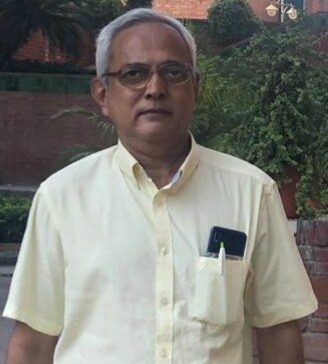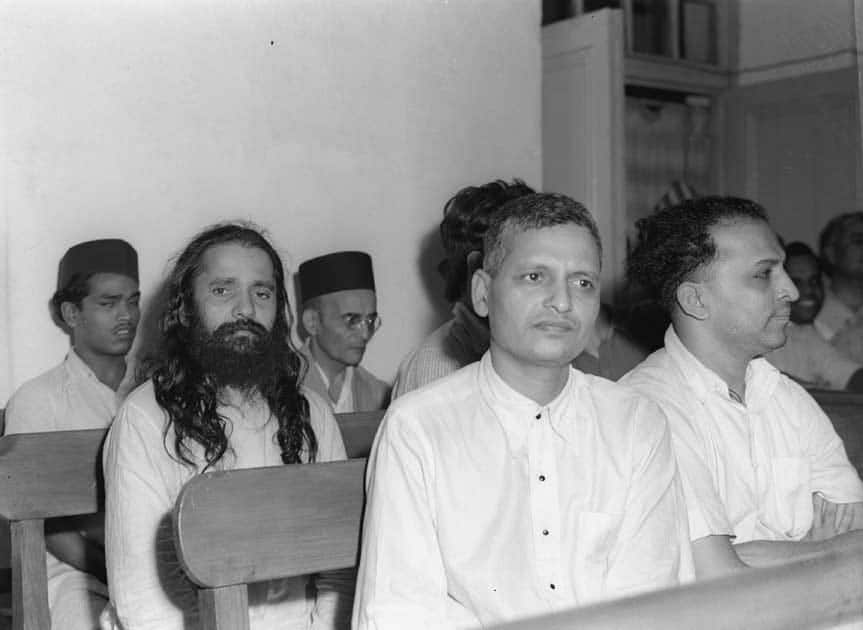
Mahatma Gandhi Martyrdom Day on January 30 is a grim reminder of how far hate politics can go, if left unchecked. It is for the thinking sections to reflect on the dangers posed by the hate politics, which, in fact, militates against the unbroken 5,000-year-old civilizational ethos of India.
Secularism is a hallowed heritage that has come down from the times of Ashoka and Mughal Emperor Akbar to in our own times of Mahatma Gandhi.
In the assassination of Mahatma Gandhi, the question is not so much on who pulled the trigger, as to what prompted him to do so.
Gandhiji was targeted by hate politics. In a democracy, it is normal to oppose those, with whose ideology one may not agree. But, to unleash hate politics against the political opponent, goes against the very grain of democracy.
Some organizations squirm at the charge of any links to Gandhiji assassination. But, at the same time, it cannot be denied that Vinayak Damodar Savarkar, chief proponent of Hindutva ideology, was in the Accused Box in the Gandhiji assassination trial; although, he was later acquitted for want of clinching evidence.

On that fateful evening of January 30, 1948, as Gandhiji made it known that he was getting late for his prayer meeting, Nehru and Patel took leave and left the Birla House. Nehru left for his Teen Murti residence and Patel for his residence on Aurangazeb Road (since renamed A P J Abdul Kalaam Road). Barely they reach, when news comes of the dastardly attack on Gandhiji; and they rush back.
Despite activation of rumour-mills and the overdrive of WhatsApp University, the truth is that Sardar Patel never ever opposed Gandhiji, nor did he ever swerve from the hallowed path of Secularism.
Sardar Patel rejected the thesis of Hindu Rashtra. Contrary to the impression created by rumour mills, Patel was one with Nehru in remaining deeply committed to Secularism.
In a letter, Sardar Patel said, “I do not think it will be possible to consider Hindustan as a Hindu State, with Hinduism as State religion. We must not forget that there are other Minorities, whose protection is our primary responsibility. The State must exist for all, irrespective of caste or creed.”
For Sardar Patel to come out so strongly in favour of Secularism, so soon after the Partition holocaust in 1947, showed that the top Congress leadership was cast in the Gandhian mould, with no differences, as far as basic ideology of the Congress party is concerned.
Patel and Nehru had healthy differences of opinion on several issues, like all thinking people do. But, as far as ideology was concerned, each one of them was uncompromising.
In fact, the assassination of Mahatma Gandhi shocked Patel so much that he angrily retorted to then RSS Chief Madhav Sadashiv Golwalkar.
Golwalkar wrote a letter on August 11, 1948, addressed both to Pandit Nehru and to him. Patel normally responded to Golwalkar and briefed Nehru about it.
Replying to Golwalkar letter on September 11, 1948, Sardar Patel wrote, “Organizing the Hindus and helping them is one thing, but going in for revenge for its sufferings on innocent and helpless men, women and children is quite another thing. Apart from this, their opposition to the Congress, that, too, of such virulence, disregarding all considerations of personality, decency or decorum, created a kind of unrest among the people. All their speeches were full of poison. It was not necessary to spread poison, in order to enthuse the Hindus and organize for their protection. As a final result of their poison, the country had to suffer the sacrifice of the invaluable life of Gandhiji. Even an iota of the sympathy of the Government or of the people no more remained for the RSS. In fact, opposition grew. Opposition turned more severe, when the RSS men expressed joy and distributed sweets, after Gandhiji’s death. Under these conditions, it became inevitable for the Government to take action against the RSS.”
Thrice, attempts were made on Gandhiji before the assassin could finally get him on that fateful evening of January 30, 1948. Prime Minister Pandit Jawaharlal Nehru and Deputy Prime Minister Sardar Patel were with the Mahatma.
Both Nehru and Patel were worried for Gandhiji’s safety. Delhi Police proposed frisking of suspicious persons at his prayer meetings, but Gandhiji rejected the very idea, saying no such frisking is done in a Temple or Church, nor could he agree to such a measure at his prayer meetings. Gandhiji insisted that Lord Ram was his ultimate protector.
Certainly Gandhiji was truly religious and rooted in Hinduism. That made him Secular at heart. Gandhiji was a great Ram-bhakt, whose hallmark is total absence of hate. When Gandhiji died, he had the name of Lord on his lips and in his heart.
Significantly, Gandhiji’s Ram Dhun had Ishwar-Allah tero Naam, Sab ko Sanmati De Bhagwan. That became the basis for his espousing the cause of Hindu-Muslim unity.
Gandhiji extended his support for Khilafat Movement in 1920, underlining the importance of Hindu-Muslim unity for achieving Indian independence. From 1920 onwards, till the dastardly and horrendous assassination on January 30, 1948, Gandhiji lived and died for the cause of Hindu-Muslim unity.
Satyagraha of Gandhiji exposed the people to the newer, spiritual dimension of politics. He believed, and rightly so, that an-eye-for-an-eye policy will leave the world blind. Satyagraha, it turned out, was not for the weak. It tapped upon the reservoirs of inner-strength of all Congress men and women; transforming their lives and the transformed the lives of the people, at large.
The greatest Gandhian legacy is his preaching of Ahimsa and Satyagraha. It was this Gandhian legacy that has earned India a moral standing in the Comity of Nations. India must not forsake but return to the Gandhian legacy.
Venkat Parsa is a senior journalist and writer based in New Delhi.
Views expressed are personal

